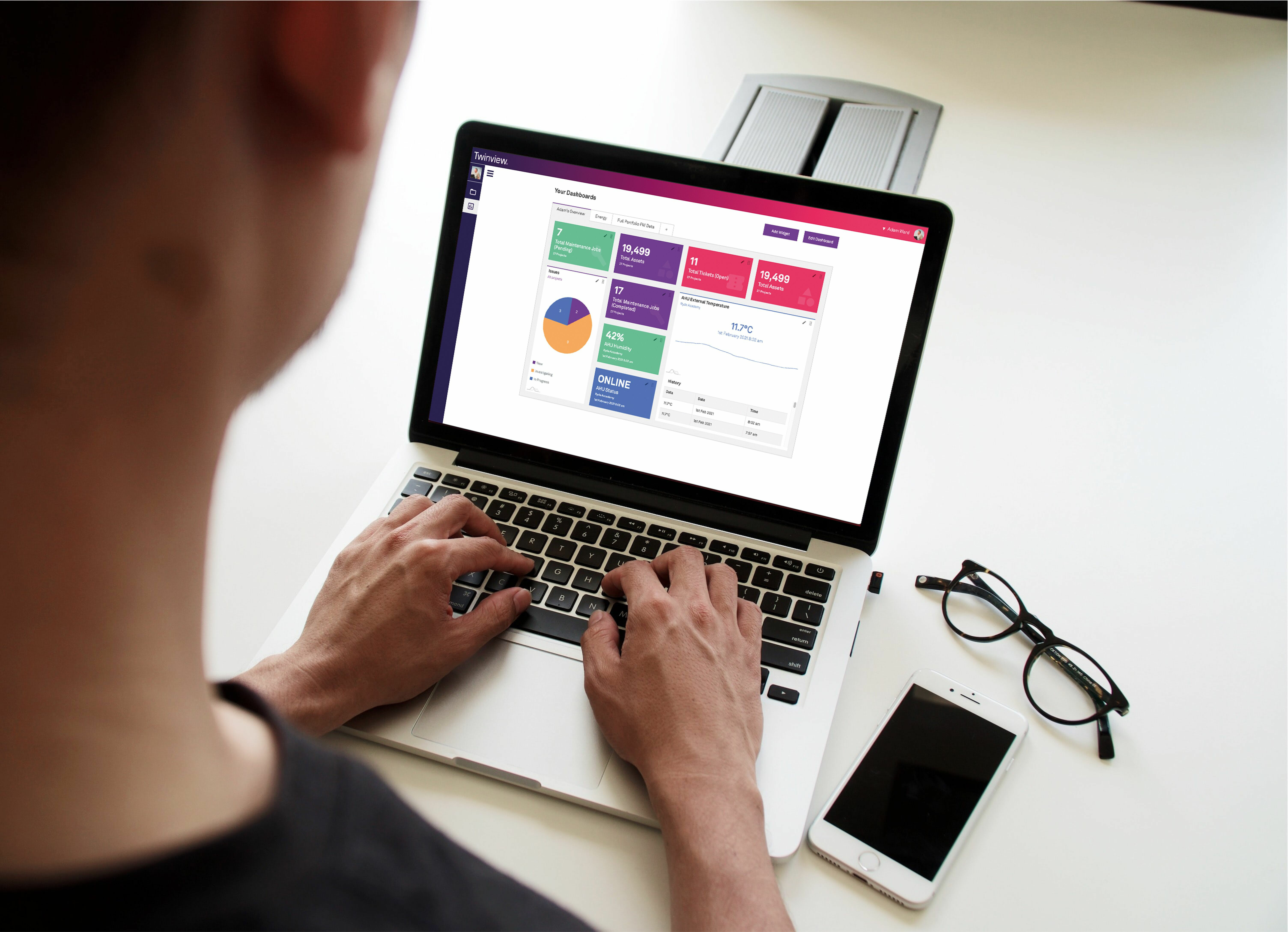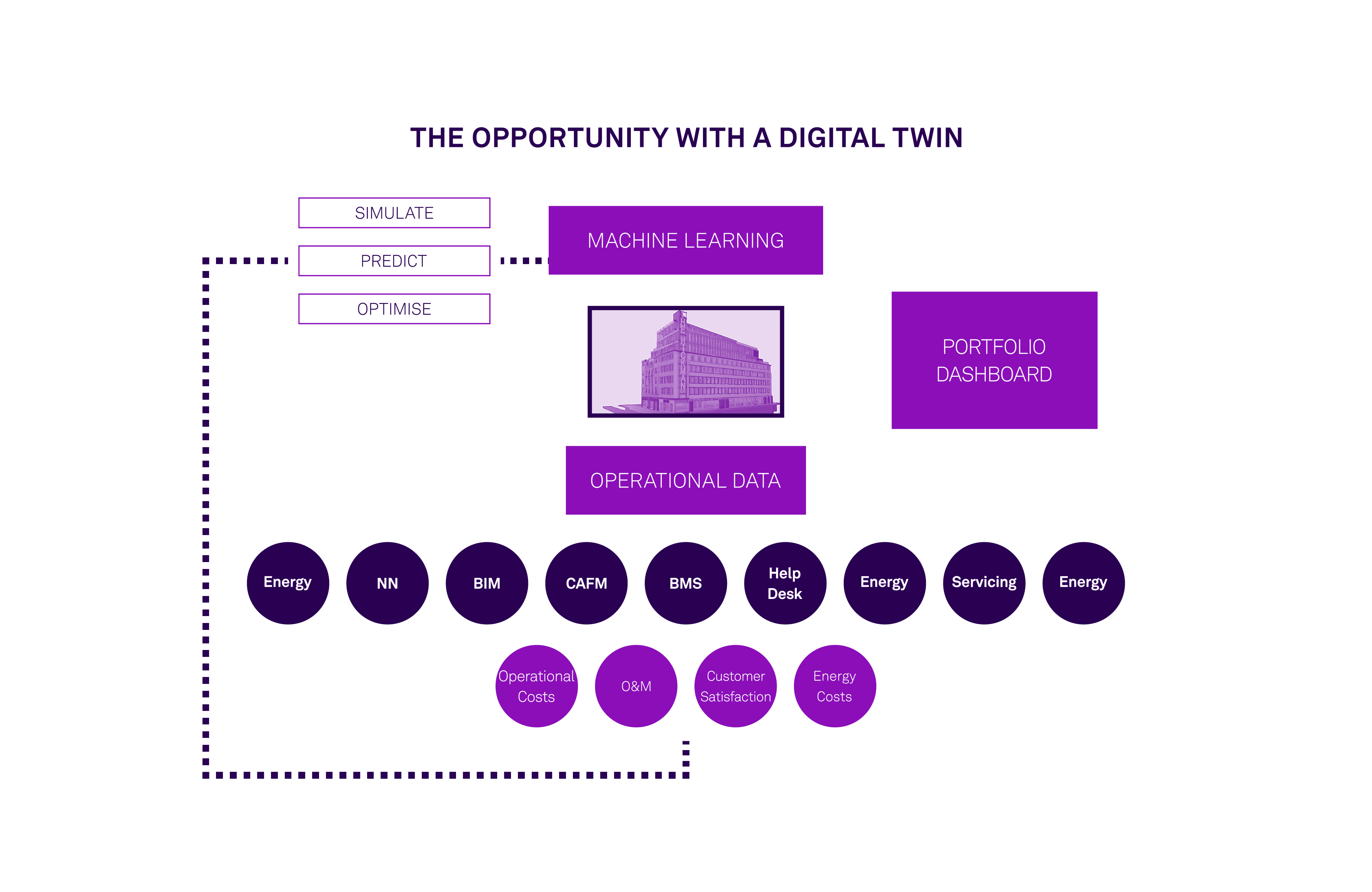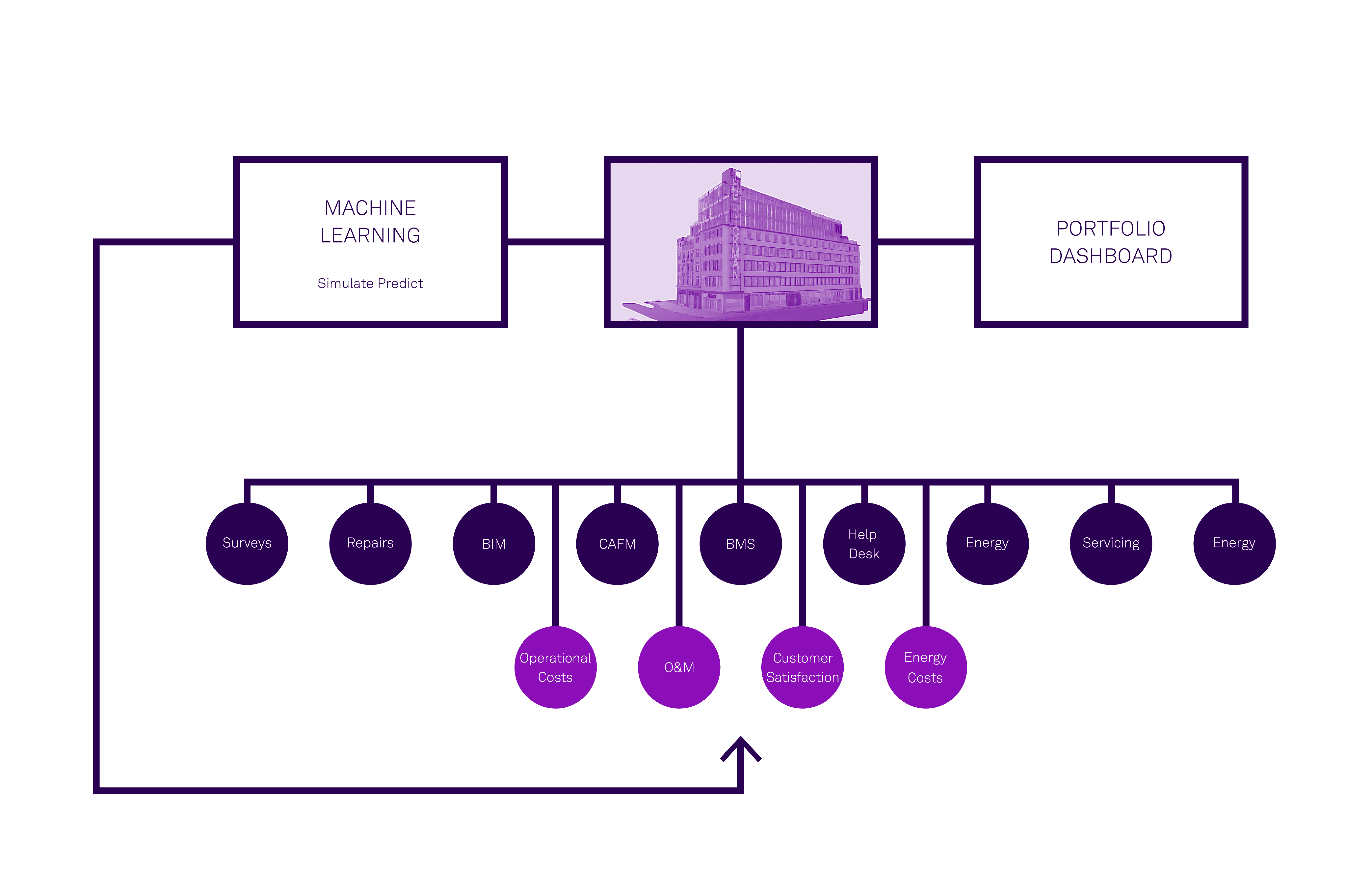19 Feb 2021 | Industry Insights
Emerging Smart Building Terminology

Twinview as a single pane of glass
The Digital Twin is new to the property sector. The connection of systems, information and data are all-new and a number of terms have been adopted that are now relevant to buildings. There is also the emergence of prop-tech platforms such as Twinview.
Twinview brings all of the operational systems in a building together and aggregates them onto a single platform that can be viewed by anyone, for anyone, dependent on permissions.
The platform connects to new and existing systems to allow monitoring and control. With the collection of data, artificial intelligence is used to optimise performance, in turn, reducing costs and carbon.
With the complexity of buildings increasing, Twinview now employs a team of Master Systems Integrators to ensure that the systems align with the client’s day-to-day requirements, allowing them to maximise value from the technology.


Master Systems Integrator
For the last couple of decades, there has been a lot of discussion about smart buildings. Several buildings have often adopted the principals as pilot projects for research, however, today a smart building is an affordable reality. An increase in cloud solutions and Internet of Things devices have made this possible.
In the building management sector, there has been a rapid increase in technology and software which has left a skills vacuum.
Traditionally, buildings have had building management system specialists such as a security specialist and an IT infrastructure specialist. These roles are typically part of the construction contract and often do not interface with the building occupier or their particular requirements.
Technology is moving fast and complexity is only increasing.
Now, all of this information has to be brought together to allow data to be viewed and controlled centrally.
A new role of the Master Systems Integrator (MSI) is emerging on building projects. The MSI’s primary role is to ensure that the client’s voice is heard and that all technologies are integrated and are technically compliant to align with security needs.
The MSI should be appointed at the very beginning of a project, even before any design has commenced. This can help to understand the client’s existing systems and processes as well as understanding the requirements from the new building.
They will write the design and construction specification, ensuring that the installation is in accordance with requirements and is correctly commissioned.
Importantly, the role continues beyond handover and adds value to the client when in operation by analysing the data and optimising performance. With emerging artificial intelligence, there is an opportunity to simulate and predict performance to optimise performance outcomes.
The single pane of glass
A Single Pane of Glass (SPOG) is a term used in the IT network community to describe a management console that presents data from multiple sources in a unified display. Typically, the glass is a computer monitor or a mobile device screen.
The SPOG view is a starting point from which a building manager or operator can get a sense of the overall property performance. It presents operational data that is easier to read and interpret. The phrase ‘Single Pane of Glass’ can also be referred to as a dashboard, one of the latest features on the Twinview platform.
An effective 'Single Pane of Glass' dashboard would include:
- An intuitive graphical user interface that is thoughtfully laid out and easy to navigate.
- A logical structure behind the display that makes accessing current data easy and fast.
- A display that can be customised and categorised to meet specific end-user needs.
Related insights

Case Studies
Enhancing Healthcare Environments Through Intelligent Space Optimisation: Twinview at Eastbourne District General Hospital
East Sussex Healthcare NHS Trust is enhancing the way space is managed at Eastbourne District General Hospital with Twinview’s digital twin technology. By enabling real-time visibility of room occupancy and usage across clinical and office areas, Twinview provides a clear picture of how spaces perform throughout the day. Hospital teams can move from assumption-based planning to data-driven decision-making, improving scheduling, reducing downtime and making more flexible use of rooms. This smarter approach supports greater operational efficiency and helps ensure that every space is working to benefit both patients and staff.
Read more

Industry Insights
Data Centres: The Hidden Cost of the Cloud
As the cloud expands, so does its unseen demand for water. Data centres worldwide are consuming vast volumes to keep servers cool, creating growing environmental and reputational risks. This article explores how water is becoming the next frontier in data-centre sustainability, and how Twinview’s digital-twin technology is helping operators measure, manage and reduce their impact.
Read more

Industry Insights
Can Digital Twins Help Us Design Buildings That Bring People Together?
Loneliness is increasingly recognised as a public health issue, and the built environment has a role to play in addressing it. A well-designed building can meet every technical standard yet still leave people feeling isolated. Homes, workplaces, campuses and later-living communities often fall short not because they lack function, but because they lack connection. Architects and planners are beginning to ask a deeper question: how can buildings help people feel less alone? This isn’t about surveillance. It’s about feedback, helping designers and operators refine buildings after handover to better support wellbeing and social interaction. Technology won’t solve loneliness on its own, but used responsibly, digital twins like Twinview can guide the creation of buildings that feel more human.
Read more

